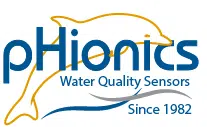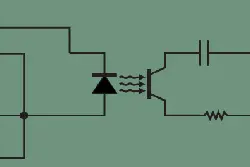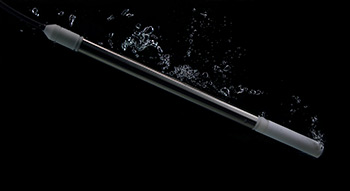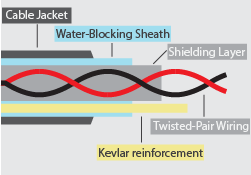Features
Isolated
Having an isolated sensor prevents ground loops, which improves accuracy and prevents electrocution of the user. Isolation does this by preventing current flow from one system to another while still allowing information or energy exchange. This is accomplished using optocouplers and transformers inside STs Series sensors. If you are interested in learning more, then please read our article about isolation and its benefits in water quality measurement.
A circuit diagram including an optocoupler, which is a common method of electrical isolation.
Submersible
The pHionics STs Series™ is fully submersible up to 70 psi. Double O-ring seals ensure the sensors are waterproof for many years of service.
Preamplifier
Most sensors on the market directly send their measurements to a receiver without modification. These measurement signals are small voltages that are vulnerable to electromagnetic interference. STs Series sensors include a transmitter inside with a built-in preamplifier, which strengthens signals to reduce interference picked up along the wires.
For more information on preamplifiers or differential amplification, please read our article on Eliminating Electromagnetic Interference.
Heavy Duty Cable
pHionics always uses high quality materials designed to provide many years of service, and our cable is no exception. Kevlar reinforcement prevents stretching to maintain proper depth of measurement. Kevlar also reduces the chance of the cable being cut through, thereby preventing loss of the sensor. In addition, water-blocking technology prevents liquid from entering a cut cable and traveling into attached electronics. Finally, chemical resistance is provided by a polyurethane coating and electrical interference is prevented with shielding.
0-50°C Temperature Output
Every STs Series includes a 0-50°C sensor with 4-20 mA output on the second channel. This sensor does not need to be connected for Automatic Temperature Compensation to function on Channel 1.
Reversible Input Protection and Operation
Improper wiring is an easy way to waste hours of time troubleshooting. It also has the potential to damage your expensive sensors if current is applied along the wrong wire.
Reversible input protection is a feature that prevents both problems to create a water quality sensor that is easy to install without worries of frying any electronics. The two wires for each channel are interchangeable to power the sensor or output the 4-20 mA signal, as shown in the diagram below.
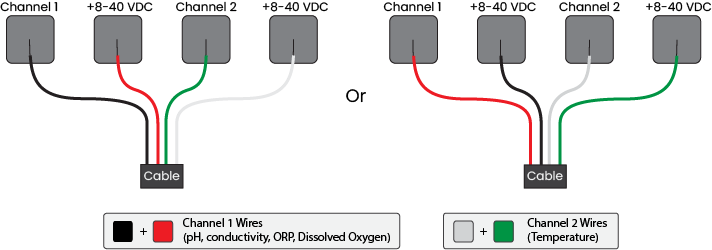
Field-Replaceable Components
Never struggle with keeping track of tiny screws while attempting to troubleshoot sensors in a muddy field again. The electrode, cable, and circuit board are connected via a patented keyless system that allows for simple removal and replacement by hand.
Or enhance your knowledge through our
Featured Article
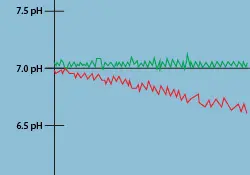
The Guide to pH Drift
pH drift is one of the most frustrating issues to troubleshoot because it can seem random and be caused by many different aspects of the environment, maintenance, and sensor design. This guide provides steps to simplify the troubleshooting process and determine what the cause of drift is along with how to fix it.
